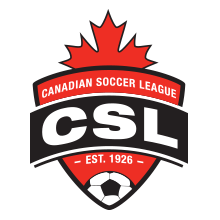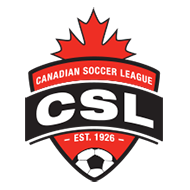
A study of the Canadian Soccer League in 2012 revealed that during the previous three-year period 2009 – 2012 no less than 40 players from throughout the league were selected for various national teams, mostly national youth teams, world-wide.
In earlier years, the most successful former CSL player was undoubtedly Atiba Hutchinson who made a brief appearance for York Region Shooters in 2002 and went on to play in Europe while making more than 70 appearances for the Canadian men’s team following 29 games for Canada’s under 20 and under 23 squads.
Some standout players, such as Paul Munster, who scored 25 goals in 19 appearances for the CSL’s London City before signing with Slavia Prague, one of the top teams in the Czech Republic in 2004, have moved on to take important coaching positions in Europe.
The glittering player gallery in the CSL archives has become so extensive that the league is considering launching a CSL Hall of Fame to recognize standout players who entered the CSL before moving to more lucrative, higher levels elsewhere.
Paying tribute to players from the past is one of a number of initiatives the CSL is pondering for 2016, a year that will put greater emphasis on youth and player development.
“We have a number of exciting initiatives, but we also face some challenges as we move toward the 2016 season,” said Pino Jazbec, the league administrator, recently. “The league has been around since 1926 and our history has often reflected the ups and downs of Canadian professional soccer over a long period of time.”
The most challenging issue in the New Year will be to ensure the league is free of match manipulation. The CSL has been dogged by reports of match fixing since allegations surfaced in a German court in 2011 that a CSL game played in Quebec in 2009 was fixed. Despite discussions with the Canadian Soccer Association and FIFA, from which came suggestions of organizing workshops and seminars to combat the global problem of match fixing, no remedial steps have yet been taken place by soccer’s governance in Canada.
The CSL will be assigning match observers to all games played in 2016 in an attempt to identify games that appear suspicious. Under consideration also, is a working relationship with an organization that monitors betting data from sports events, including soccer and including the CSL.
There have been discussions with law enforcement agencies and while there is interest in prosecuting players involved in manipulating matches leading to fraud, any betting associated with the CSL is carried out off- shore, making charges in Canada more time consuming and difficult. It’s worth remembering that while the Canadian Soccer Association suspended four national team players for one year for taking bribes in return for throwing a game against North Korea in Singapore in 1986, a Canadian court refused to handle the case.
Stan Adamson, the CSL’s director of media relations, has expressed concern about the extent to which the league as a whole can carry the stigma associated with allegations of match fixing. “Unfortunately, it’s a subject which can unfairly put a shadow over an entire league. When match manipulation is going on it can be unknown to a team’s management, let alone the clubs in general or the league administration,” he said.
Vincent Ursini, the CSL president, has expressed a hope that the betting companies in Europe will cease listing CSL games in their betting profile. Betting on CSL games is not available from Canadian betting interests, such as the OLG in Ontario.
Several new groups have shown interest to enter teams in the CSL for the 2016 season, applications have been received and the league is expecting to announce a kickoff mid-May with an extended player development structure additional to the popular Second Division. The Second Division accommodates certain new teams preferring to take a step by step approach to professional soccer, playing with reserve teams of the established clubs.

